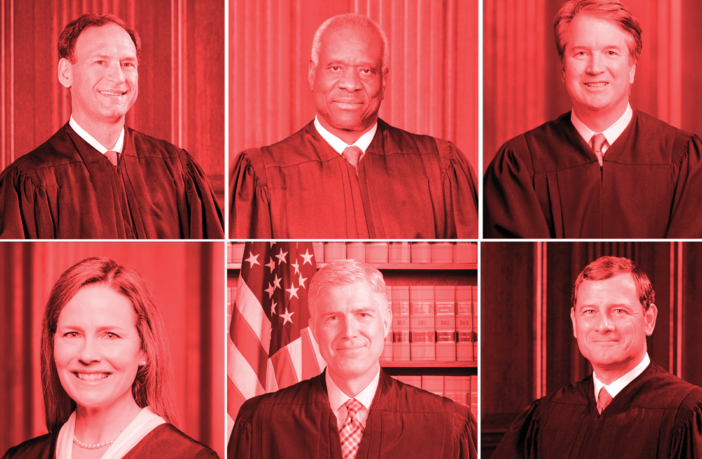Last Updated on July 5, 2023 by BVN
S. E. Williams
Although the Supreme Court issued two temporarily favorable rulings related to voting rights in recent weeks, some of us felt they were setting segments of the nation up for “the fall,” and that is exactly what happened last week with no less than two backwards decisions against minorities and LGBTQ+ communities that included a halt to Affirmative Action in college admissions.
If any of you have ever wondered how the nation successfully sustained structural and systemic racism across centuries despite a civil war and subsequent social movements pushing it in the opposite direction, these rulings are textbook examples of how white supremacy has remained pervasive and entrenched in America since the “Birth of a this Nation”.
Since the court’s ruling halting Affirmative Action in college admissions, serval publications have pointed this out in various ways as it relates to its impact on Health Equity and the rulings potential impact on the overwhelming need for Black and other doctors of color. Currently only 5.7% of physicians in the nation are Black. Growing the pool of minority doctors and other health care professionals is essential for Black and other minorities as studies show that people of color, especially Black men, trust doctors that look like them. Being treated by doctors of color is essential to ease concerns related to unconscious bias in the health care system.
Another study showed that a mere “10% increase in Black primary care doctor representation was associated with an extra month of life expectancy for Black patients.”
This, of course, is only one area of concern regarding equity. We can say the same thing holds true regarding the ruling’s potential impact on K-12 education. As school districts across the country continue to grapple with closing the student achievement gap and shutting down the school to prison pipeline, data tells us that Black teachers improve education for Black students. Research has shown regarding disadvantaged Black males, “exposure to a Black teacher in elementary school reduced high school dropout rates by 39% and raised college-going aspirations.”
“Webster’s Dictionary defines “supreme” as a position of unquestioned authority, dominance, or influence; greatest in degree, quality, or intensity, characterized by highest excellence or achievement; of utmost importance. . .”
Another study found that a demographic mismatch between teacher and student can “drive inequality in academic outcomes for Black and white students alike–both had “significantly higher achievement’ when taught by a teacher of their own race which is certainly more likely to happen for white students when assigned to a teacher of their race. Limiting access to higher education will certainly make it even less likely that children of color will have teachers that look like them.
And, what about the impact the loss of Affirmative Action in higher education stands to have in relation to the ongoing quest for economic equity? A 2019 U.S. Senate report by the Joint Economics Committee (Democrats) showed white families had the highest median and mean family wealth: $188,200 and $983,400, respectively, while Black families’ median and mean wealth was less than 15 percent that of white families, at $24,100 and $142,500, respectively.
Acknowledging that a college education alone can not close the wealth gap between Blacks and whites in this nation––especially in light of the decline in earnings of Black college graduates in recent years—-it still holds true that “education improves lifetime earnings for [Blacks], and indeed, Black families with a bachelor’s degree have greater median wealth than Black families without one.”
These are not the only impacts when access to higher education is limited. Research shows a link between the education level of parent and child outcomes related to “educational experience, attainment, and academic achievement.” Examples offered include the association between children of highly educated mothers that have higher rates of participation in early childhood education programs and home literacy activities.
Limiting access to higher education can also impact across generations in other ways. The U.S. Education Department’s National Center for Education Statistics shows that children of college-educated parents are much more likely to pursue and complete an undergraduate degree than are young people whose parents did not attend college.
These are just a few examples of how inequities continue to flourish in America in a society whose goal is justice and equity despite even after having overcome the nation’s White Supremacy mindset that fostered slavery, Jim Crow and resisted Civil Rights.
We understand the Supreme Court decision on Affirmative Action is about more than denying access to higher education for Blacks and other underserved communities. It is really about what underlies that denial and the impacts it stands to have on all the areas of equity that keep minorities at a disadvantage when it comes to health, K-12 education, the economy, and the list goes on.
When you consider the definition of “supreme” in the context of White “Supremacy” and superimpose it on the role of today’s majority on the U.S. “Supreme” Court, it all makes sense. Just read the definition of “supreme:’ in this piece.
This however, will not deter Black people because we know the quest for equity is filled with twists and turns and there continues to be many set backs along the way. It just make us more determined to seek other, more sustainable solutions–and, we will.
Note: We all know Clarence Thomas is confused about who and what he is.
Of course, this is just my opinion. I’m keeping it real.



